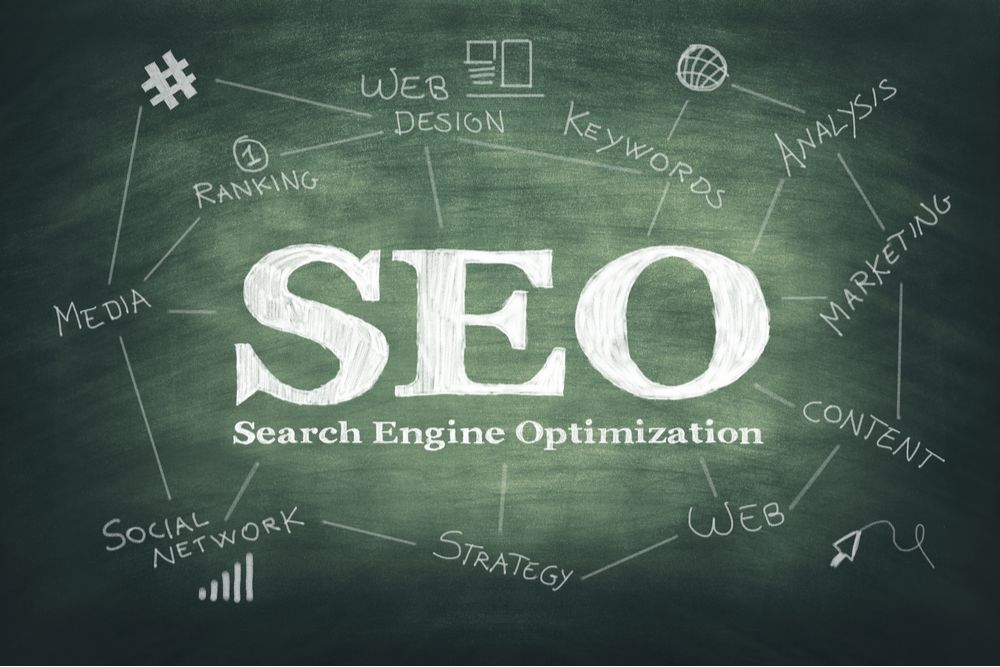This post originally appeared on tBL member Joshua Lyon’s blog Joshua Lyons Marketing Blog and is republished with permission. Find out how to syndicate your content with theBrokerList.
The best marketing practitioners understand that SEO isn’t what it once was. Now, if you want to do a truly great job with SEO, you need to focus on holistic SEO.
If you’re like most people, your logical next question is “what is holistic SEO?” Great question! Here’s the thing; SEO has evolved significantly over the last few decades. There are many tactics people use today that aren’t necessarily what should be used. And in fact, SEO has grown so much that it overlaps into other aspects of marketing. For example, SEO touches on social media, content strategy, PPC, email marketing, web development, and more.
When you do SEO right, you want to think about those various touchpoints, and ensure they’re being done through the lens of SEO. And when you do that, you’re doing holistic SEO. Also, think about this. Holistic SEO isn’t about creating content and backlinks. Rather, it’s about creating quality content that meets the users needs and addresses their intent. I’ll elaborate more on this, but let’s back up to the 1990’s, so you can get the full context.
A Super Brief History of SEO
In the 90’s it was possible to show up on search engines, based on the content contained on your web page. That was pretty much the main and only factor for deciding what should be displayed in search results. Yahoo! was the leading search engine, by far. What did they look at? They looked at the content on your website. Then, Google launched in 1998 and things changed.
For an impressive timeline of SEO history, take a look at The History of Search Engines.
Google Entered the Scene
Google was a game-changer because their algorithm didn’t just look at the content on a web page. Rather, it also took backlinks into consideration. If you have a backlink, that means another website is linking to your website.
It made sense that more credible websites would be linked to. Many websites had pages that were loaded with useless text, and stuffed with keywords. The website owners hoped the text being present would make them rank well. And that worked until Google came along. Google recognized there were many pages that provided tons of text and no real value. But when a website has another website linking back to it, that shows vote of value. This is especially true at that time, when there was no real incentive to hyperlink to someone else. You only linked to someone because there was something worth linking to.
The quality of search results for Google became much better than what other search engines were providing, because of their innovative algorithm.
The Practice of Search Engine Optimization
If you have a website, you want it to rank well in search engines. The more website traffic you get, the more business you get. So, optimizing your website for search engines makes a lot of sense. Over the years, there have been two primary factors that were considered of upmost importance for ranking well. Those include quality content and quality backlinks.
Holistic SEO isn’t about creating content and backlinks. Rather, it’s about creating quality content that meets the users needs and addresses their intent. #JLM #HolisticSEO Click To Tweet
The Importance of Quality Content
If you want to rank well, you need to produce great content on your website. That’s been true for decades, and it’s still true. The more value your website provides, the more your website visitors will benefit. And search engines want to make sure the people they send your way are benefiting.
If you aren’t currently working to develop the content on your website, and striving to provide value to your audience, then you’re giving your competition the advantage.
 The Importance of Quality Backlinks
The Importance of Quality Backlinks
Aside from having great content, you need other ways to show the value of your website to search engines. One of the most valuable ways to do this is to acquire quality backlinks.
There are many ways to generate backlinks. If you aren’t improving your backlink profile, that’s something you should work on.
Over the years, it has mostly been assumed that all you need to do is primarily write content and get backlinks. And that was typically enough. But so much has evolved with SEO, especially as of 2020, till today. So, while content and backlinks matter, there are nuances. These nuances are so significant that they overlap into other realms of digital marketing. They go beyond what’s typically though of as SEO.
Your typical SEO is called “traditional SEO.” It’s primarily centered around content and backlinks. Holistic SEO, on the other hand, is centered around providing true value to the website visitor. It’s focused on addressing the user’s intent. And that’s where semantic SEO comes in. That’s a topic for an entirely different blog post. To learn more, check it out here: How to Use SEO Semantics in Your Content Strategy
How Does Holistic SEO Fit Over Typical Marketing Activities?
Many SEOs (search engine optimizers), such as myself, no longer focus just on content and backlinks. There is so much more strategy that needs to be involved. This strategy overlaps into non-SEO aspects of marketing. Let’s explore this:
Social Media Through the Lens of SEO
In the past there was a lot of speculation that having a large social media following would be a ranking signal for Google. However, Google made a very clear statement that social media followers and pages aren’t ranking signals. You can see what Matt Cutts said in this video on the topic:
[embedded content]But here’s the catch; while social media doesn’t directly impact your SEO performance, it does indirectly impact it. Here’s an example: Let’s say you create a fantastic blog post about a trending topic within your industry. Then, you share that blog post on social media. Due to the value of the post, it goes viral within your industry. This in turn results in you generating backlinks from other industry relevant blogs, who decide to reference your content. These backlinks from third-party websites do impact your own rankings.
Because of this, it’s important that your social media activities and SEO activities work hand-in-hand. They need to work together to help you get the greatest reach possible. Is your social media person keeping your SEO goals and objectives in mind, when they post content? If so, what are they doing? And if they aren’t, what should they be doing.
By the way, there are some great studies out there that show social media activity is correlated to enhanced SEO performance. And to Matt Cutts’ point, this goes to correlation, not causality. If you have great content that does well on social media, you probably have great content that help with SEO performance.
Website Development Through the Lens of SEO
Many website developers will say they do SEO, but in reality, they only embrace a few SEO factors. For example, including meta titles for each page is an SEO practice, but it’s not all that should be done for website development.
Web developers should work with SEO professionals to ensure their websites are as SEO-friendly as possible.
He’s a practical test to see if your website development is done to the fullest possible SEO standards. Go to web.dev and run a test on your URL. Below is a screenshot of what the results will look like. In the screenshot below you’ll see the results for Facebook, when I test their website.
As you can see, their results aren’t perfect from an SEO perspective. One of the metrics in the report is called “SEO.” But in reality, the other factors play a role in SEO performance as well. For example, if your website doesn’t load quickly, that has to do with the “Performance” and “Best Practices” metrics. Though, a slow website will also impact SEO performance. It’s unlikely your website developer will have run the web.dev test on your website prior to going live. But this is something your SEO person will take a look at, and want to have improved, if possible.
Keep in mind, your website developer probably didn’t estimate your website cost based on having perfect scores in web.dev. That would be very difficult to do, so don’t take it out on them. However, once they’re nearing completion, it wouldn’t be a bad idea to have a test done on the development site. See if there are any major red flags that should be taken care of, prior to going live. And, if you want all 100s, expect to spend some more time on development.
Content Strategy Through the Lens of SEO
The SEO professional has a fairly unique ability to identify topics your target audience is likely to read. He or she can actually tell you how long a blog post or article should be, and how often people are searching a particular topic.
Of course a content manager can think of good topics to write about. But, what if they worked with the SEO person to make sure the topics will result in increased traffic? Also, the SEO professional can look at previously published content, and see how much traffic it currently gets. Then, they can suggest the content be lengthened and republished, to drive greater results. For example, I can tell you that if you want to rank well for “SEO in 2021” you should plan on writing at least 3,172 words and have a DA score of at least 81. Please see the screenshot below:
These strategies are easy for a holistic SEO professional to create, though not every company thinks to ask their SEO person to come up with a content strategy. If you have an editorial calendar, but haven’t asked your SEO person to review it, you might be missing out. Also, consider having your topic titles reviewed for SEO-friendliness. If just changing the title can spike your traffic, it’s probably worth doing. Your SEO person will know how to research this.
Pay Per Click (PPC) Advertising Through the Lens of SEO
SEO and PPC are two different tactics for driving traffic to your website. Their and both advantages and disadvantages to each. However, it’s a good idea to make sure your ads are working in conjunction with your SEO.
For example, are you running your Google Ads because you don’t currently rank well in the organic search results (non-paid results)? That’s fine. Paying Google Ads is a great way to show up at the top of search results. But, is it possible you now do show up at the top of Google and don’t realize it? If so, you may be paying to have an ad, when you’re already ranking organically. That might be a waste of your money. Then again, it may not. It depends on your strategy.
Here’s another example of how SEO and PPC should work together. You want your PPC ads to lead people to a page that converts well. Have you asked your SEO person which pages on the website have the best conversion rates? Someone who does holistic SEO should be able to easily figure that out, especially if Google Analytics is installed. It may be that your PPC person needs to adjust their ads so they’re driving traffic to a better landing page.
Are you enjoying this post? If so, be sure to subscribe for occasional email updates from our team!
Email Marketing Through the Lens of SEO
SEO knowledge can also be applied to email marketing. When you send an email, you should try to generate some type of response from the recipient. That may be to encourage them to read a recent blog post.
This goes back to what I said about the content strategy. Make sure the content being promoted is in-line with your target market. You can see this through Google Analytics, which your SEO professional should be paying attention to. Also, promoting the most popular content via an email marketing will likely result in helping you acquire more backlinks.
How to Apply This Information
If you want to rank well on Google, you need to focus on more than just creating some blog posts and backlinks. You need your SEO person to be an integral part of your complete marketing plan and strategy. Here are some basic suggestions:
Develop your influence on social media to help generate more exposure to great content. This should lead to your content being shared more often. As a result, you should see more backlinks and better rankings.
- Review your website for user experience. If it isn’t fast, attractive, easy to use, and driving conversions, then it needs to be adjusted. Have your SEO person review the website for quality control in this area.
- Have your editorial calendar reviewed from an SEO perspective. You want to make sure you’re covering the best topics possible. Also, you need to know the ideal length for your content.
- Review previously created content to ensure it’s following best SEO practices. If you can improve old content, to drive more traffic, that’s a win.
Make sure the keywords you’re targeting for PPC are complementary to what your doing for SEO. They should work together. This will help you control your ad spend wisely. - Check your emails to make sure you intend to promote the content that’s most likely to generate the best engagement. What does your audience “want” to read. That’s what you should focus on. You’re SEO professional can point you in the right direction on this.
How to Use Your SEO Person
The bullets listed above are just some of the ways you can leverage SEO to improve your marketing. But really, you should have a candid conversation with your SEO person. Don’t just think about assigning them a blog post to write in an SEO-friendly way, and encourage them to get backlinks. Rather, have them help you craft the best possible way to move your marketing forward on all fronts.
In most cases, one marketing channel specialist doesn’t overlap with other marketing practices. For example, a Google ads person probably doesn’t have anything to do with website development. An email marketer doesn’t do anything with SEO. A web developer has nothing to do with social media marketing. However, the SEO professional should be able to provide great value to many aspects of your marketing. In fact, an SEO professional with significant experience should make a great marketing director. This is because they tend to have a good overview on how everything fits together. This is what sets a traditional SEO practitioner apart from a holistic SEO practitioner.
In fact, here’s a great blog post that talks about the difference between old SEO and holistic SEO: https://digitalmarketingphilippines.com/holistic-seo-vs-the-old-seo-infographic/
Closing Thoughts
SEOs used to be focused on just creating SEO-friendly content and backlinks. But now, that’s not the case. Many still do focus on those tactics, and haven’t evolved. But, a good holistic SEO person will look at multiple facets of the marketing plan. They will understand how to drive the most value out of them all. And they will ultimately show the best possible value to Google, search engines, and those who visit your website.
My final advice for this blog post it to consider your own marketing. Have you had an SEO professional review it? If not, should you? We would be happy to help on this front, if it’s something you’re interested in. Just shoot us an email through the contact page, or scroll down to the contact form below.
Otherwise, good luck with your SEO, and by extension, your marketing as a whole. If you ever need our assistance, just let us know!



